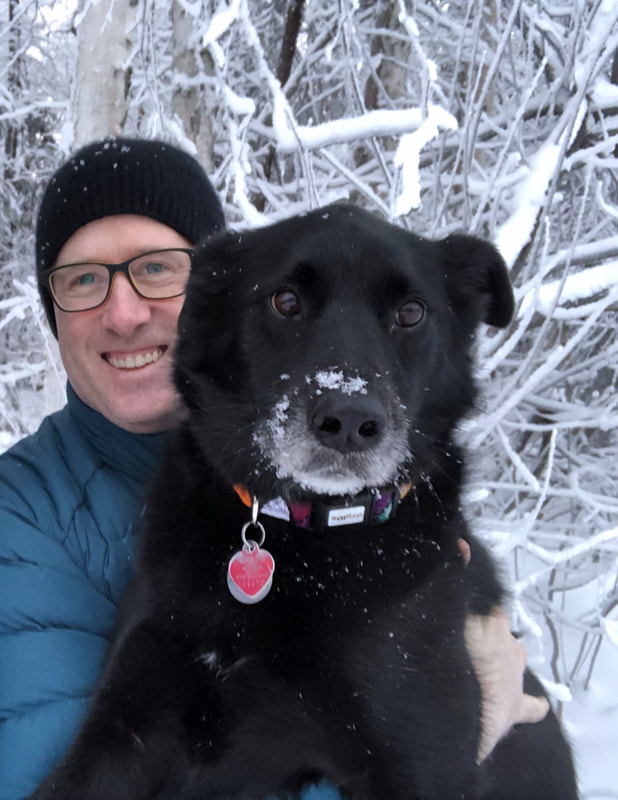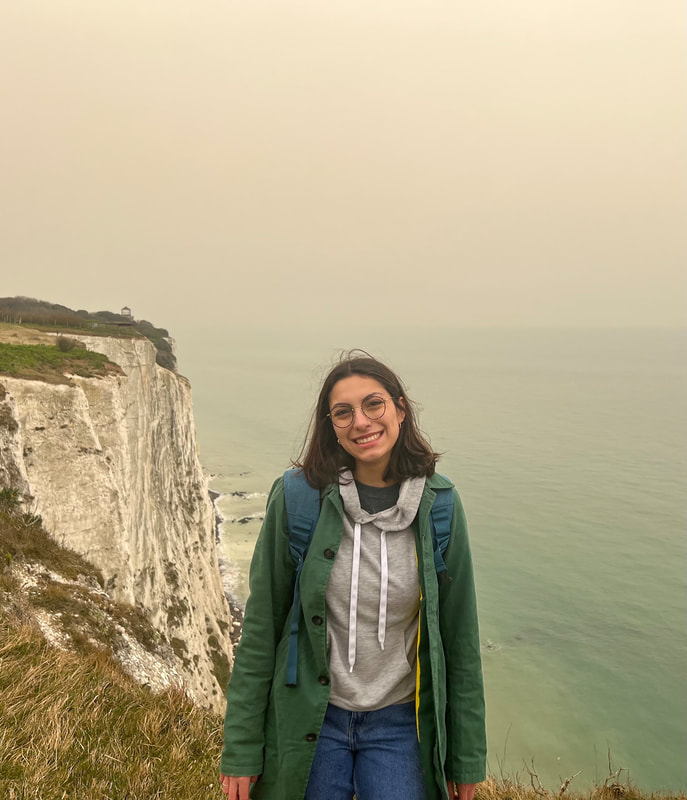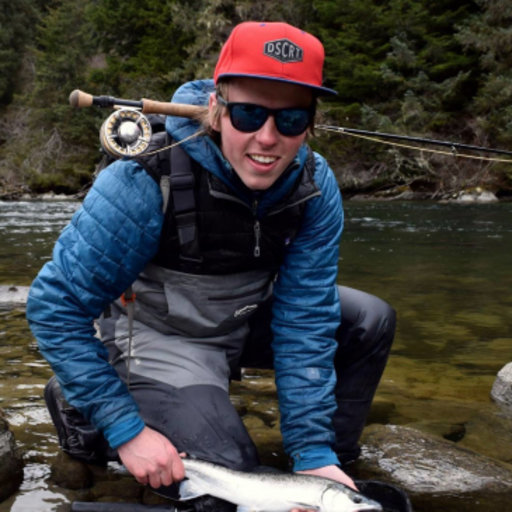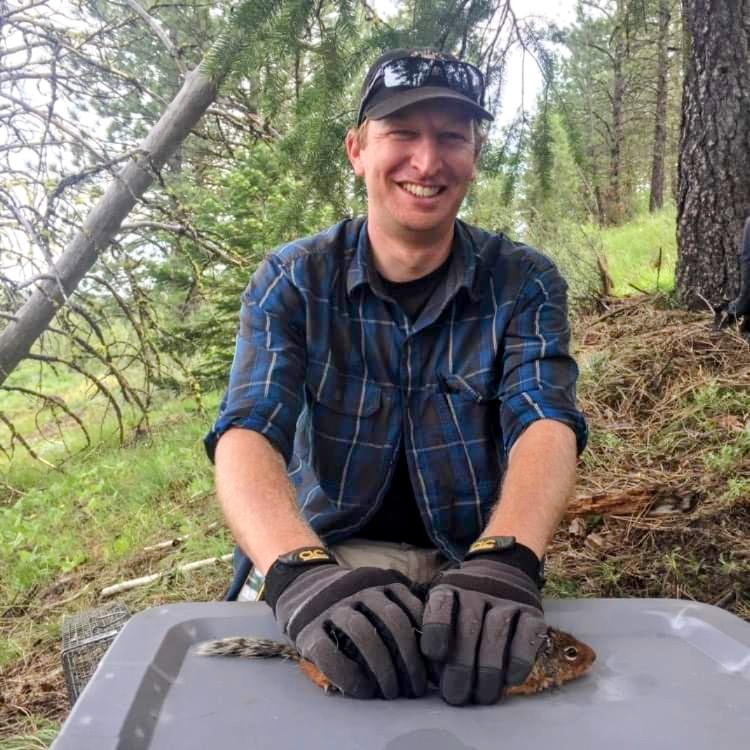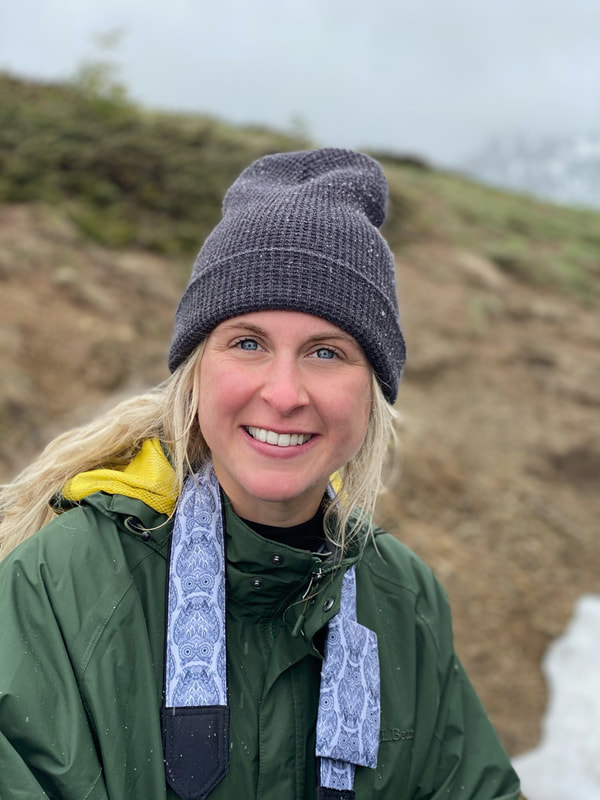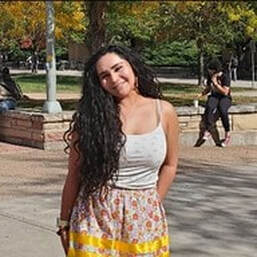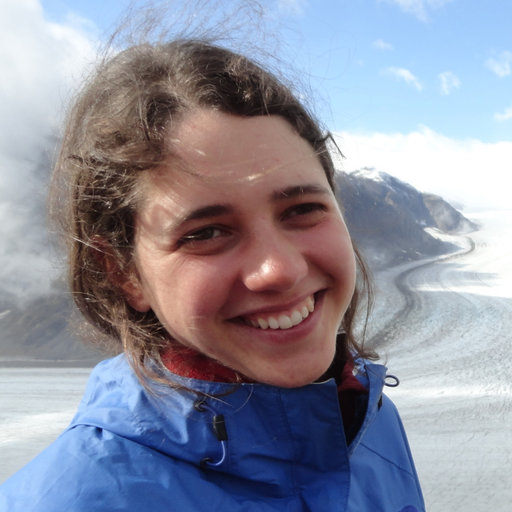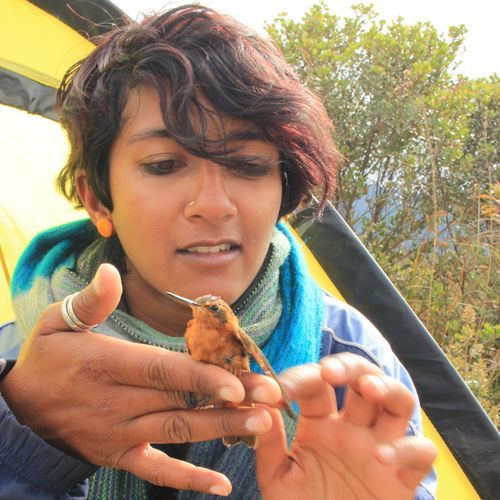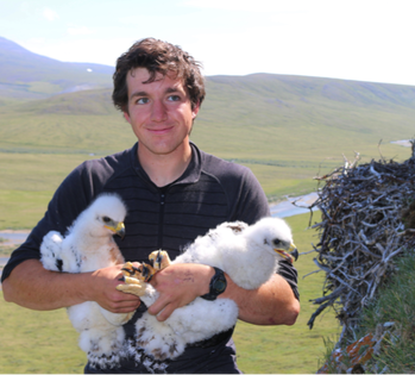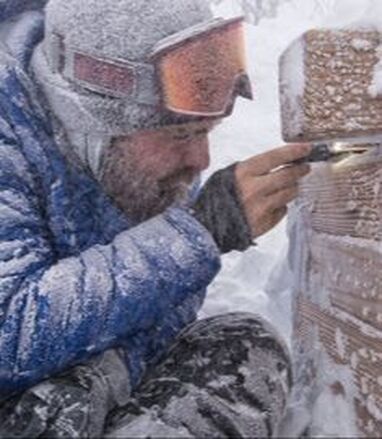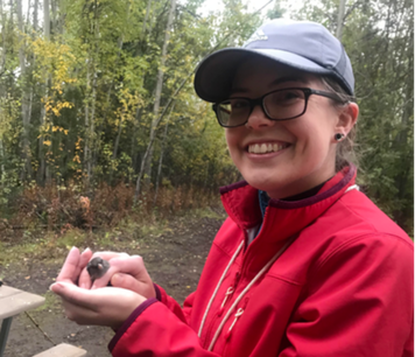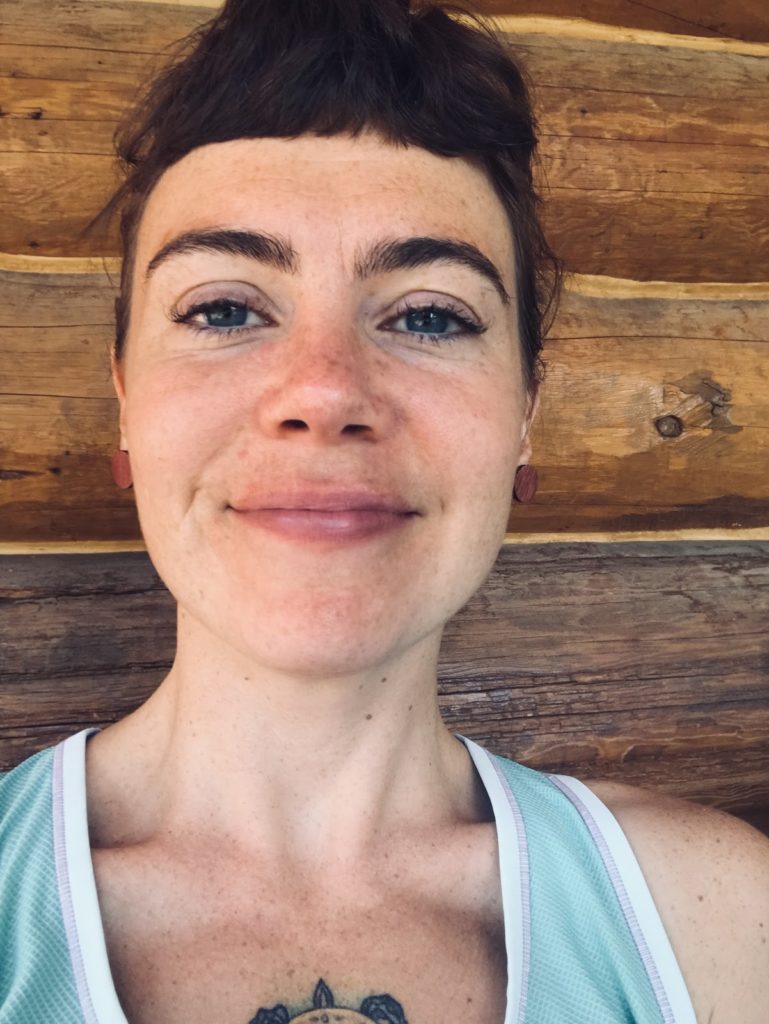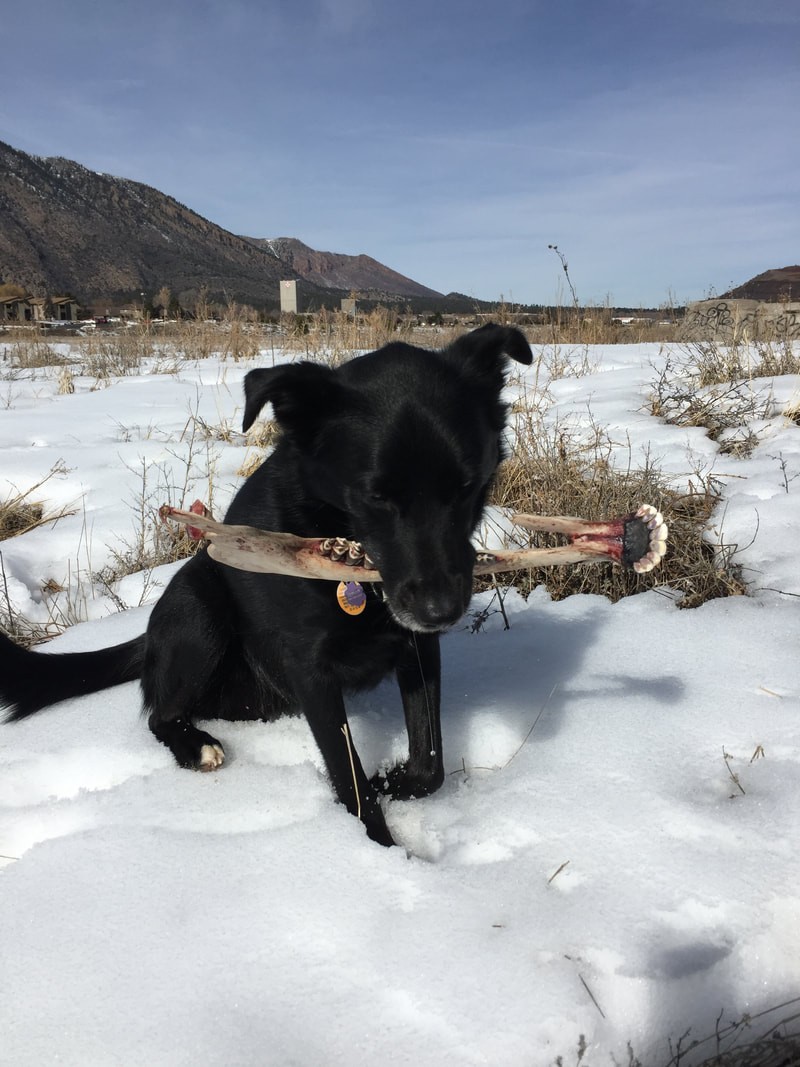Cory T. Williams
Associate Professor
My overarching goal is to combine molecular, physiological, ecological, and evolutionary approaches to advance our understanding of the causes and consequences of climate driven shifts in timing. To do so, I capitalize on long-term monitoring datasets, implement lab and field experiments, and support graduate students and postdoctoral fellows as they pursue their own innovative ideas. My approach to research is built on key collaborations I have developed with chemists, neurobiologists, ecologists, and wildlife professionals, and I am keen to develop new collaborations that allow me to combine whole-organism studies of physiology and behavior with genome-based technologies for investigating the cellular and genetic basis of adaptation.
Contact: cory.williams(at)colostate.edu |
|
Anna Bautista
Colorado State University
Anna hails from the suburbs of Chicago. She completed her undergraduate degree in Zoology (Anthropology minor) at CSU in Spring 2022. She has experience investigating the roles of oxytocin and estrogen receptor beta in neuroendocrine stress signaling. Additionally, she has studied individual variation in the learning ability of honeybees. In the future, she plans to pursue a graduate degree. Outside of helping with laboratory work, you can find Ana outside reading a good book and enjoying the sun or inside working on countless creative endeavors such as painting and jewelry-making.
|
Cole Deal
PhD Student
Colorado State University
Cole is a neuroendocrinologist that has a foundation in the regulation of appetite for mammals and fish. Currently, Cole is using hibernating mammals as a model to study seasonal changes in the neural circuits that act to regulate/modulate feeding and appetite. Cole completed is MS degree at Memorial University working with Dr. Hélène Volkoff, where he investigate the role of the thyroid hormone axis in regulating metabolism and energy homeostasis in fish. |
Austin AllisonPhD Student
Colorado State University
Austin's interests within the fields of ecology and evolutionary biology are broad, ranging from individual physiology to community ecology. His dissertation research uses hibernating mammals as models to elucidate the eco-evolutionary drivers of individual life-history strategies. He previously completed a M.S. under Dr. Courtney Conway at the University of Idaho studying behavior and demography of the federally threatened northern Idaho ground squirrel.
|
Sarah Kerr
PhD Student
Colorado State University
Sarah's interests and experiences lie in the field of marine mammal ecology. After living in California for the past couple of years, Sarah has been involved in various research projects mainly involving northern elephant seals. Her MS degree under Dr. Frank Fish at West Chester University focused on the biomechanical energetics of gallop sequences in California sea lions, and her current dissertation focuses on assessing and classifying behaviors of northern fur seals using accelerometry and stable isotope analyses.
|
Lab Alumni
Helen Chmura
Postdoctoral Fellow (2018-2021)
University of Alaska Fairbanks
Helen is interested in the mechanisms underpinning seasonal changes in behavior and physiology. She completed her PhD at UC Davis, examining the link between reproductive phenology and autumn migratory departure timing in arctic songbirds. In the Williams Lab, she led research on the neuroendocrine mechanisms that control seasonal timing in hibernating mammals. Helen is currently a Wildlife and Terrestrial Ecosystems Research Ecologist with the USDA Rocky Mountain Research Station. |
Anusha Shankar
Postdoctoral Fellow (2019-2020)
University of Alaska Fairbanks
Anusha is interested in how animals respond (physiologically and behaviorally) to extreme and energy-limited environments. For her PhD research at Stony Brook University, she studied free-living hummingbird torpor and daily energy management in Ecuador and Arizona. For her postdoctoral research in the Williams Lab at UAF, she examined how sleep, sugar consumption, adiposity and the gut microbiome is affected by short photoperiods in grass rats, a diurnal model for seasonal affective disorder. Anusha is currently a Reader (equivalent to Assistant Professor) at the Tata Institute of Fundamental Research (TIFR) Hyderabad in India. Visit her website at anushashankar.weebly.com |
Devin Johnson
PhD Student (2017-2021)
University of Alaska Fairbanks
Devin used nest cameras and stable isotope approaches to investigate niche partitioning and individual specialization in an Arctic raptor guild His research took place near Nome, AK, and is a part of the Peregrine Funds' Gyrfalcon Conservation Project in collaboration with Dr. David Anderson (Peregrine Fund) and Dr. Travis Booms (Alaska Department of Fish & Game). Devin developed a novel approach to refine dietary estimates based on stable isotope mixing models which involves using camera traps to better delineate individual and species-level variation in isotopic discrimination. See a National Geographic Article on Devin's research.
Devin is currently a Modeler with the U.S. Fish and Wildlife Service Alaska Marine Mammals Management Office |
Matt Kynoch
MS Student (2019-2023)
University of Alaska Fairbanks (co-Advised by Knut Kielland)
Matt is studying the movement ecology and energetics of lynx in the Brooks range of Northern Alaska. His project combines satellite telemetry with biologging and involves a collaboration with state and federal wildlife agencies. Specifically, he is using accelerometry to examine temporal niche shifts in lynx that occupy an environment where photoperiod changes dramatically across the annual cycle. See a National Geographic Article on Matt's research. |
Cassie Duncan
MS Student (2018-2021)University of Alaska Fairbanks
Cassie's main research interests revolve around neuro-endocrinology and reproductive physiology of mammals. For her MS research, she used electron microscopy to measure ultrastructural changes of neuroendocrine and endocrine responding cells associated with reproductive timing in hibernating arctic ground squirrels.
Cassie is a Recreation Specialist with Fort Wainwright in Fairbanks, AK |
Sara Wilbur
MS Student (2016-2019)
University of Alaska Fairbanks (co-advised by Brian Barnes)
Sara is interested in how variable hibernation physiology affects macromolecular integrity. Her MS research revealed that telomere shortening occurs in a tissue-specific manner across hibernation. While use of torpor appears to confer a protective effect on telomere length, telomere shortening likely occurs during periodic arousals and is particularly pronounced in brown adipose tissue, which is chiefly responsible for thermogenesis. Sara is currently a Clinical Technical Specialist at Translational Genomics in Flagstaff, AZ. |
|
Past Undergraduates (UAF & CSU Only)
Mo Sherrier (CSU: 2022-2023) - Tech on Ground Squirrel Project
- Molecular control of fattening Sophia Bracio (UAF: 2021) - URSA Award - Muskox growth & nutrition Grace Burrell (UAF: 2020-2021) - URSA Award & UAF Capstone - Climate change effects on arctic ground squirrel phenology Kyle Callegari (UAF: 2018-2020) - BLaST Research Award - Effects of photoperiod on the grass rat microbiome Shelby McCahon (UAF: 2018-2020) - BLaST Research Fellow - Effects of photoperiod on seasonal depression in grass rats Meret Beutler (UAF: 2019-2020) - Tech on NSF Project - Neuroendocrine drivers of seasonal timing in hibernators Maddie Michaud (UAF: 2019-2020) - Tech on NSF Project - Neuroendocrine drivers of seasonal timing in hibernators Tiffany Lehnerd (UAF: 2018-2019) - Tech on NSF Project - Neuroendocrine drivers of seasonal timing in hibernators Sara Sheffer (UAF: 2018) - Tech on NSF Project - Neuroendocrine drivers of seasonal timing in hibernators |
Proudly powered by Weebly
